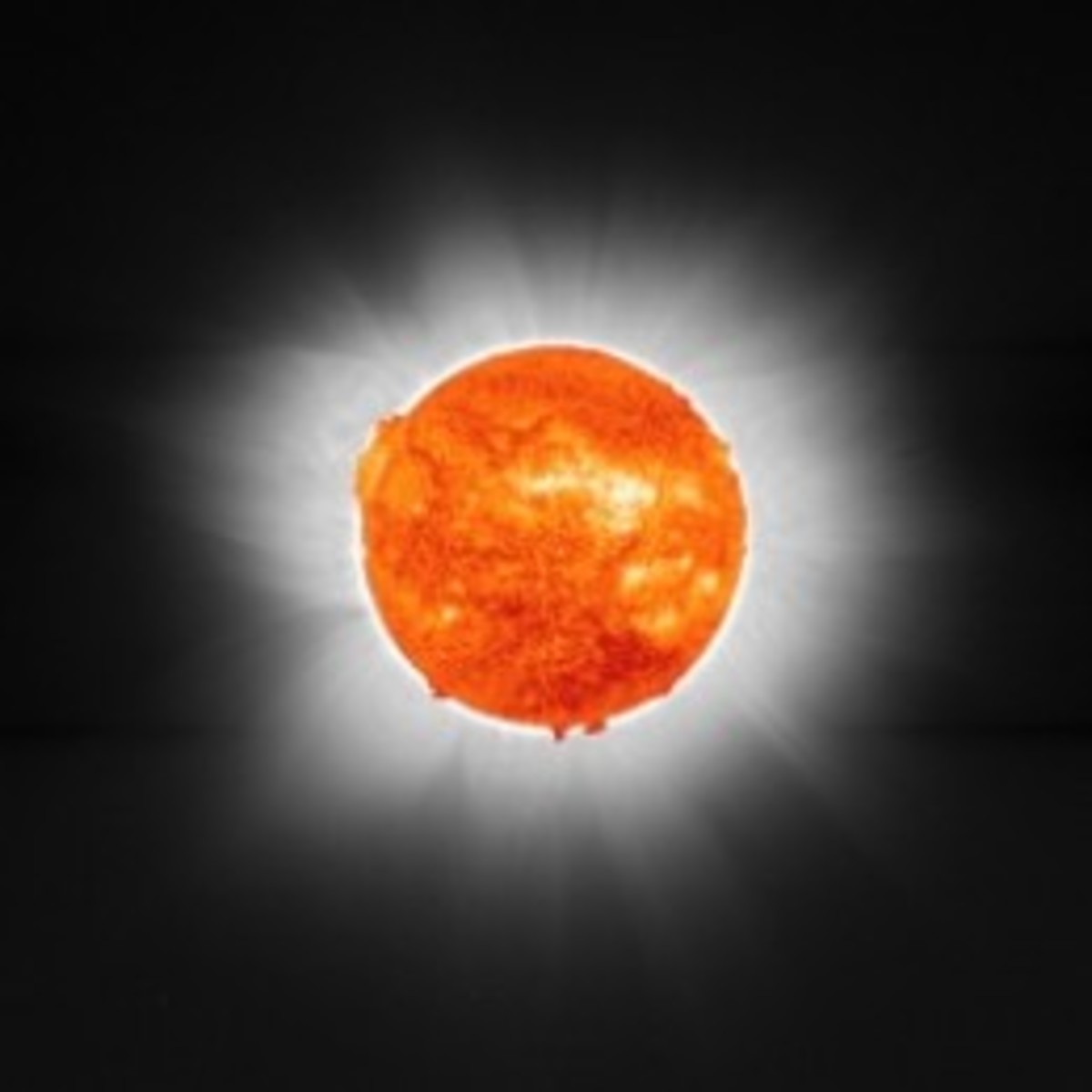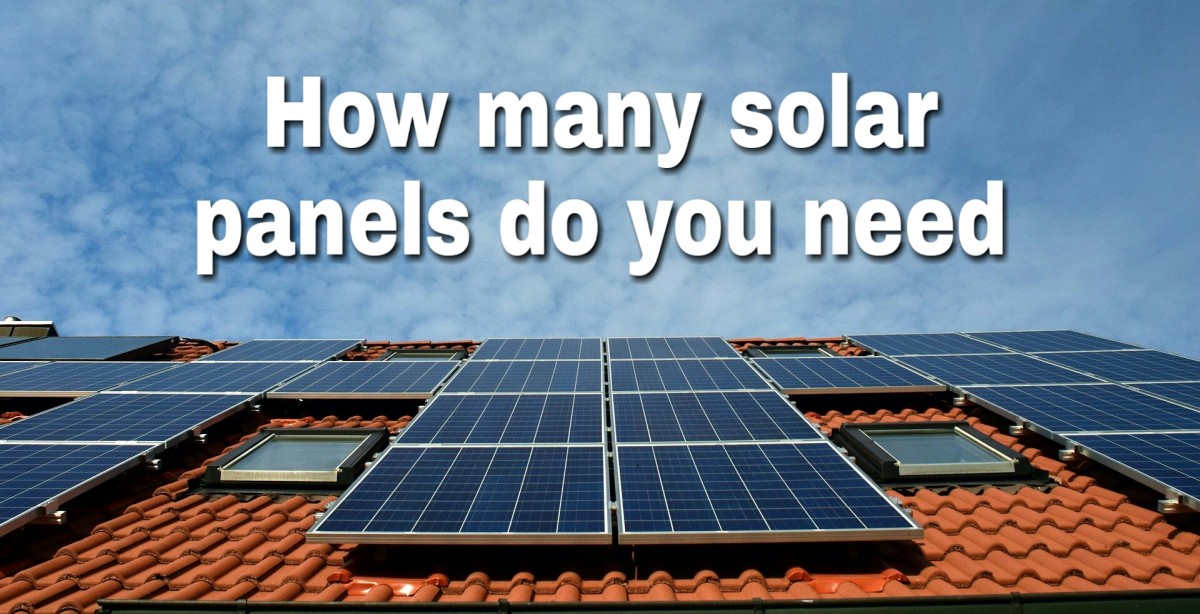Solar Power - Ways of Producing Electricty from Sun
The solar radiation reaching earth from sun can be converted to electricity which provides a clean, renewable and free source of energy to us. The solar power systems are in developing stage (there are some commercial usages but most methods are in prototype stage due to high costs avoiding commercial use). Ways of producing electricity from sun energy can be gathered under two major headlines. Photovoltaic (converting the solar power directly to electricity) and Concentrated Solar Power (CSP - which is roughly concentrating the sun beams thus creating a high temperature and converting heat energy to electricity by known methods).

Photovoltaics
Photovoltaics is the technology used for directly converting the sun energy to DC electricity. You are already familiar with photovoltaics if you've ever used a calculator. Usage of photovoltaic cells in calculators is a good idea to get rid of batteries but you can't extend the usage to higher power needs because of high costs of photovoltaic cells. The power efficiency of photovoltaic cells are between 12-24% which is considered low compared to the other energy sources. The high cost of photovoltaics prevent them from wide usage but they have many usage areas like satellites which need continuous power without batteries or small devices (calculators, watches).
Concentrated Solar Power (CSP)
Concentrated Solar Power systems concentrate the sun beams to produce heat and then convert the heat energy to electricity by conventional ways. There are several designs for concentrating the sun beams but the method is the same in all designs. There is a reflector which concentrates the beams in a heat collector (also called absorber or receiver). There is a fluid (molten salt for example) flowing in the receiver and stores heat. The hot fluid flows to a heat engine and the heat energy is converted to electricty. There are several designs which differ in the way of concentrating sun beams and storing heat.
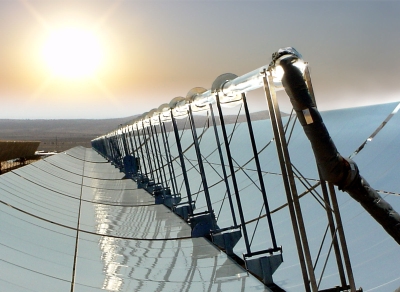
Parabolic Through Design
In Parabolic design there are parabolic mirrors collecting the heat on the receiver which is placed on the mirrors focus. The energy production is as explained above. The hot fluid is flown through pipes and transferred to the heat engine. This is the most known and practiced method of solar power plants and there are several power plants full operational. Parabolic Through power plants have an efficiency of %20 but less area usage and cheaper design is an advantage compared to other systems.

Power Tower Design
The Power Tower Design is similar to the parabolic design but there are many number of flat, mobile mirrors (also called heliostats) which focus the beams on a single receiver (tower) and all energy focused on a single point is creating higher temperatures and thus creating energy with higher efficiencies. There are several number of power tower plants in production. Although parabolic through design is proven, the higher efficiencies and lower energy cost predictions are creating more investments for Power Tower Plants.
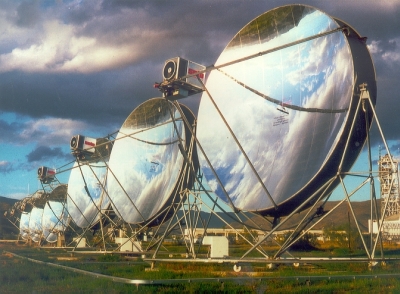
Dish Design
Dish Design uses the same principle with the satellite receivers. The dish collects and focuses the energy at a receiver facing the dish. There are several advantages of dish design, the efficiency is high (the efficiency up to 40%) like in tower design and each unit has it's own stand alone structure which is making it fit for smaller applications (unlike tower design which has a high central tower cost.) The dish design has a high cost when compared to other system because of its complex design and requires more maintenance. However high efficiency is promising a future for dish designs also.
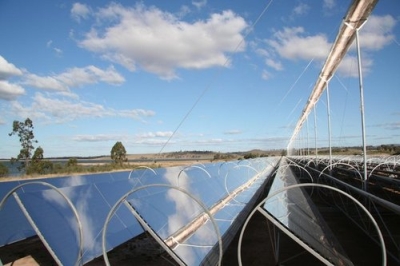
Fresnel Reflectors Design
Fresnel Reflectors is a new concept similar to parabolic through design. The fresnel reflector design uses a set of flat mirrors which share a common receiver. (Unlike parabolic design which each mirror has its own mirror.) The advantage of fresnel reflectors is the usage of flat mirrors, less number of receivers and lower area/energy ratio are decreasing the costs dramatically. Although efficiency is lower than parabolic through design low cost per energy can make fresnel reflectors used widely in the future. The fresnel reflectors are in developing stage yet.




